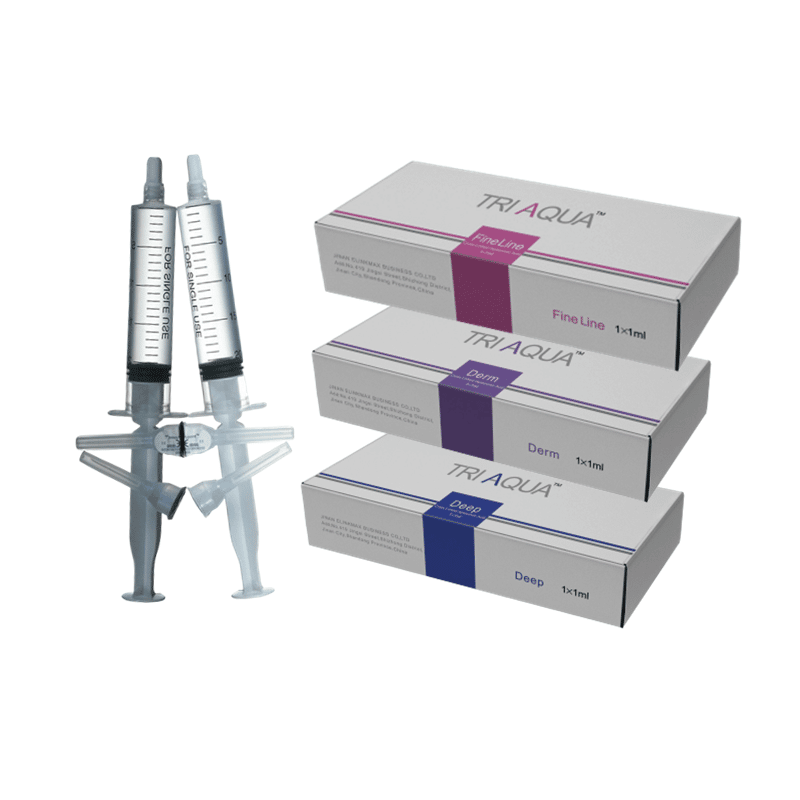Hyaluronic acid is a natural body substance that maintains skin elasticity. Over time, the human body loses this substance, leading to visual aging consequences like wrinkles and folds.
Many cosmetic procedures restore hyaluronic acid, but using dermal filler is perhaps the friendliest method. In many ways, dermal filler is a safer and less complex procedure to enhance facial features. The injections take less than half an hour, and the side effects are usually mild.
Continue reading to learn more about dermal filler, what to expect from the procedure, and how to get the treatment as safely as possible.
What Is a Dermal Filler?
Dermal filler is a type of injectable gel used in nonsurgical cosmetic procedures to enhance facial features. This substance varies depending on the filler type, but most achieve similar results.
Typical dermal fillers remove wrinkles, smooth facial lines, and restore skin volume. During application, the practitioner applies the injections under the skin.

How Does Dermal Filler Work?
The purpose of dermal filler is to replace hyaluronic acid lost throughout the year. It works in a really simple way. A practitioner uses an injection with a fine and a small needle to fill the desired area with dermal filler.
After application, the results are nearly instant. The dermal filler enhances facial folds, smooths wrinkles, and attracts more water to keep the skin hydrated.
Additionally, dermal filler works at a biological level. The product affects the body’s existing hyaluronic acid, making it produce more collagen and elastin. Over time, this biological response will improve skin integrity and consistency.
What Is Dermal Filler Made of?
The substances used to make dermal fillers vary depending on the filler type. These are the most common ones with their purposes and their constitution:
Hyaluronic acid, like Restylane
This filler is the most common, providing volume and hydration to the skin.
Calcium hydroxylapatite, like Radiesse
This substance is usually present in human bones and is more common to remove deeper wrinkles. The effects last for a year.
Poly-L-Lactic acid, like Sculptra
This filler type improves collagen production in the body. Typically, healthcare providers employ this substance to smooth wrinkles and lasts two years or longer.
Polymethylmethacrylate, like Bellafill
Dermatologists use this filler to increase skin volume and maintain its consistency. PMMA fillers have collagen and tiny balls that remain under the skin following dermal fillet application.
Is Dermal Filler Natural?
Dermal fillers contain several substances already habiting the human body naturally. While some risks are present, the application of fillers is common and safer with proper precautions. Thus, it’s a natural cosmetic procedure to rejuvenate facial features.
Process for Dermal Filler Application
Dermal filler application is relatively easy and quick. Most spend more time in consult with dermatologists than receiving the treatment. Here’s how it usually goes.
Step 1: Preparations
Go to the preferred dermatologist for a consult. Let them know about the areas desired to enhance, like the forehead, mouth, cheekbones, and nose.
The dermatologist shall provide a comprehensive description of how to get the most aesthetic results. Additionally, share any information about health conditions to assess potential risks.
Once the dermatologist agrees, schedule an appointment for the procedure.
Step 2: Dermal Filler Application
The practitioner will use a small dermal filler injection with a fine needle to ease the hyaluronic acid gel into the targeted area. This process is quick and painless, though some minor discomfort may be noticeable.
Dermal filler types like Juvederm have an anesthetic effect to make the procedure more comfortable during and after.
Step 3: Post Dermal Filler Application
With the dermal filler injected into the space of volume loss, the results are immediate. The substance improves volume in the area and softens deep lines. It will also remove wrinkles and facial folds.
Things to Consider After Applying Dermal Filler
- Leave the targeted area untouched for a minimum of six hours.
- Avoid high temperatures and outdoor activities.
6 Advantages of Using Dermal Filler
Dermal filler procedures offer the following advantages.
A Rejuvenated Look
The point of getting dermal filler injections is to restore the natural contours of the face. This procedure provides cheekbones definition, adds volume to sunken cheeks and lips, enhances areas around the mouth, removes wrinkles, and more.
Feel More Confident
Rejuvenating procedures to enhance facial features grants a sense of confidence. Patients perceive themselves under a new image, which boosts their self-esteem and may improve personal relationships.
Fast Results
The procedure to inject dermal filler is usually an hour long. These are often readily available at any healthcare provider, and the results are noticeable shortly after.
Long-lasting Enhancement
The filler type dictates how long the enhancement will last. Some will last a couple of years, whereas other dermal filler types provide facial improvement for months.
Speedy Recovery
Most people can resume their routine and usual activities after the procedure. Some healthcare providers could recommend taking one or two days to rest, depending on a few factors.
For instance, the recovery time depends on how extensive was the treatment, the filler type, and the current health condition.
Affordable Costs
Dermal filler procedures are nonsurgical treatments. The injector does not use expensive equipment and will not require hours until completion. Therefore, the prices and costs are more affordable than surgical enhancement procedures.
Is Dermal Filler Safe?
Thorough research and tests have proven that dermal filler application is safe. Typically, patients experience mild side effects that only last for a few hours or up to two days.
These side effects are not permanent, including skin redness, swelling, bruises, minor pain, and slight tenderness. If more serious problems persist over time, consulting health care providers for assistance is necessary.
What are the Risks of Dermal Filler and How to Avoid Them?
Professional practitioners have the skill to minimize procedure risks to a minimum. However, the danger still exists if patients do not take the time to look for a serious injector.
These are the risks of using dermal filler and a few recommendations to avoid them.
Asymmetrical Facial Features
Avoid this risk by asking the practitioner for before and after photos. Do not rely entirely on social media pictures, as these can often be deceiving.
Physical Responses, Like Bleeding, Bruising, Or Swelling
These are often unavoidable side effects. Nonetheless, consult a dermatologist first to understand how the skin may react to the procedure. Decide whether or not to move forward with the dermal filler application based on the risks it poses.
Scars and Other Skin Damage
Look for a professional practitioner exhaustively, and do not make a hurried decision. Consider social media like Instagram, and talk to the health care provider directly for a background check. Less professional and careless injectors without an established background may be more likely to make these mistakes.
Infections
Make sure the injector is a proven and certified practitioner using sterilized equipment. The room must also be sterile and impeccable. Otherwise, the risk of getting an infection will be higher.
Other risks of dermal filler are rashes, itching, numbness, and lumps or bumps under the skin. If the individual has allergies history or is pregnant or breastfeeding, dermal filler is not suitable.
The Importance of a Good Injector
We cannot stress enough the importance of finding a good injector to perform the procedure.
Nowadays, many practitioners focus on eliminating wrinkles and fail to see the human face as a whole. They invest time working on specific spots without maintaining consistency and harmony between all facial features.
This problem usually results in many more issues, like the following:
Excessive Lip Line Filling, Resulting in Highly Noticeable Bulges
This level of negligence gives an unnatural facial look. It is the more common consequence of the wrongful application of cosmetic procedures.
Eradication of Nasolabial Folds
Nasolabial folds are a facial feature found between the mouth and the nose. Losing this particular feature results in a strangely flat face.
The Same Cosmetic Approach for Every Individual
Everyone’s different, including their faces. Therefore, each case is unique and requires an exclusive approach. Otherwise, the patients will have a similar look that is not harmonious with their particular characteristics.
Even the less meticulous observer will notice the result of a cosmetic procedure gone wrong. Take the time to find an injector that sees the human face as a sculpture and their work as art.
Final Verdict — Is Dermal Filler Necessary?
Compared to Botox and complex aesthetic procedures, dermal filler is safer and friendlier to the human body.
Naturally, finding a good injector is key. Only a certified practitioner can determine the right approach for effective dermal filler application.
Trust a qualified healthcare provider, and enhancing facial features for a beautiful and more youthful look will be a breeze.
